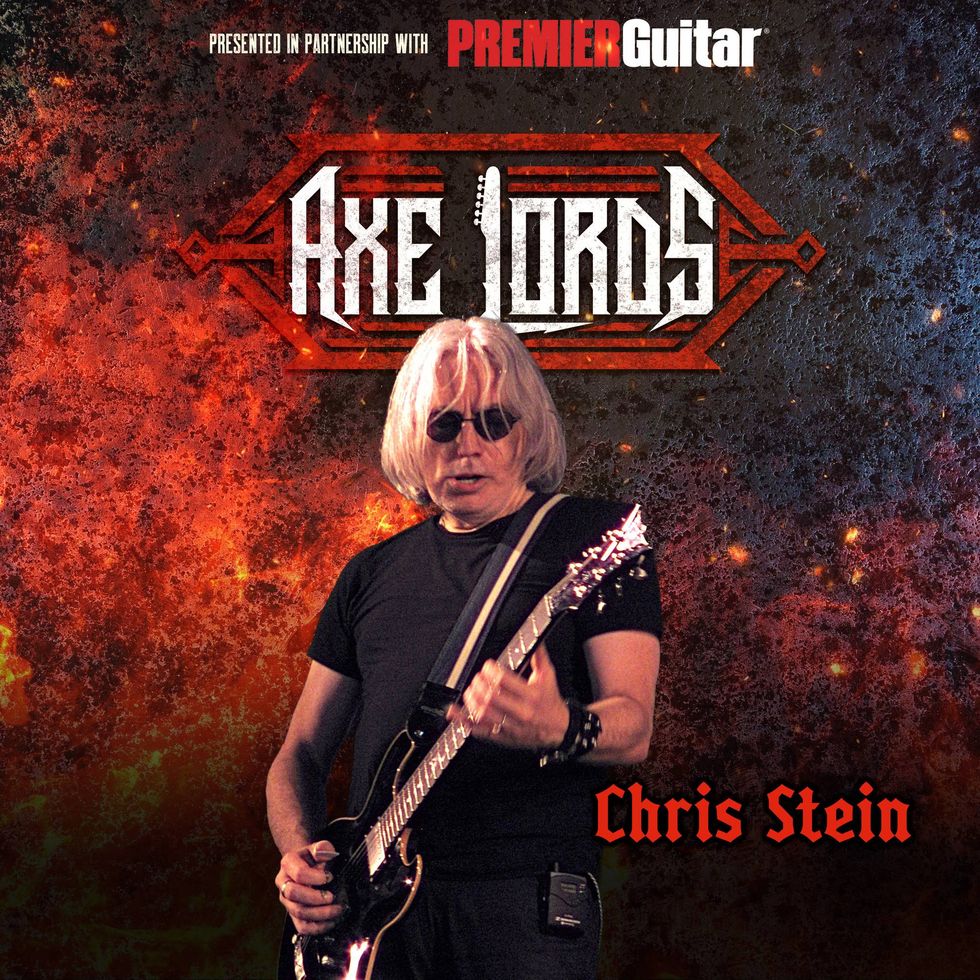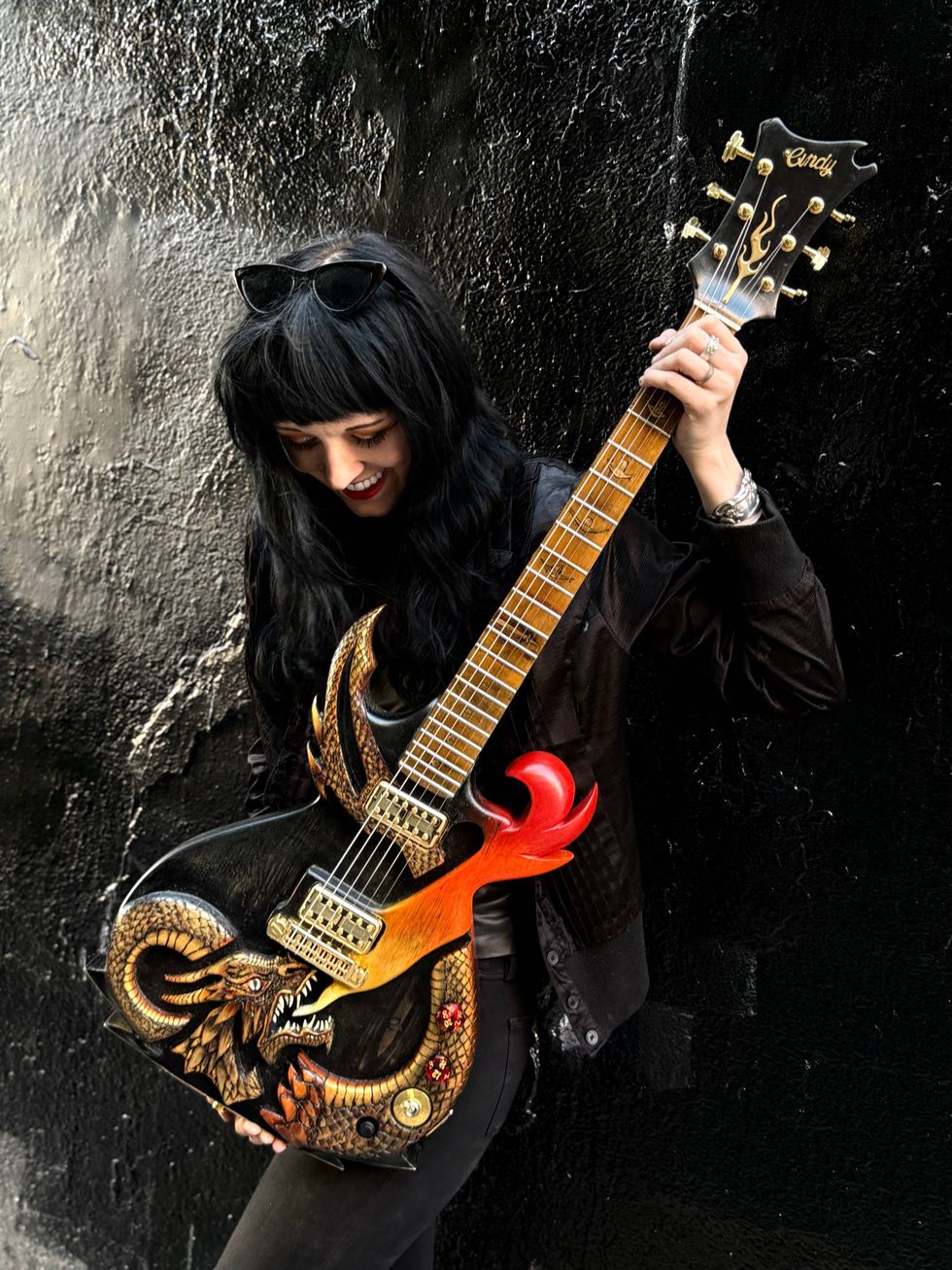Hello Zach,
I read Trash or Treasure every month and I thought you could help me figure out what I have here. I know that it is a Jackson and it looks as though it is from the sixties. However, I’m pretty sure Jackson wasn’t making guitars that far back and I can’t find any other markings on the guitar. Can you tell me what I have and if it is worth anything now?
Thanks!
Tom in Kansas City
Hey Tom, thanks for reading. While the story of Jackson guitars starts in the mid-seventies, your guitar is far from that era – let me start with a little history of how Jackson came to be through Charvel guitars.
Wayne Charvel started a guitar shop in Azusa, California, that became known for building custom, high quality guitar bodies and necks. Grover Jackson came to work at Charvel in 1977 and bought out the company about a year later (Jackson also moved Charvel to San Dimas, California). At the 1979 NAMM show, Jackson debuted the first custom Charvel guitars and in 1981, the first Charvel catalog was released. Charvel was different than most guitar companies at the time because their guitars were all custom-built – the amount of available options was simply staggering.
In 1983, Jackson released a line of guitars with his name on them; they were very similar in style and features to Charvel, except Jackson’s guitars featured neck-thru bodies while Charvel used only bolt-on designs. In 1985, Jackson licensed both brands to the International Music Company (IMC), and in 1986 he sold both brands to the
company. By the late-eighties, IMC further differentiated both brands, moving all of the higher-end models to the Jackson side and leaving Charvel with mainly entry-level and medium grade guitars. IMC also began producing Charvel models in Japan and Korea, which marked a turning point for Charvel, as the bulk of the instruments were no longer built in the U.S. Throughout the nineties, Jackson continued to flourish while Charvel slowly floundered to the point where they ceased production in the mid-nineties.
In the fall of 2002, Fender Musical Instruments Corporation (FMIC) bought Charvel and Jackson. With the purchase, they revived the Charvel trademark. This is why Charvel and Jackson are so closely associated with each other today. In fact, instead of printing individual Charvel and Jackson factory catalogs, IMC often printed one large catalog featuring both trademarks’ entire line of instruments. Also, unlike the arrangement in the early nineties, Charvel is now mainly a custom shop based in San Dimas while Jackson produces a wide variety of electric guitars ranging from entry-level to signature U.S. models. Charvel and Jackson continue to be a mainstay in Fender’s empire of guitars.
Charvel/Jackson guitars are usually associated with the hair metal era; the guitars’ pointy bodies, hockey stick-shaped headstocks and sharkfin inlays provided a perfect accompanyment to the faster, flashier form of rock that was popular in the eighties. In the early nineties, Charvel developed something totally unlike their flagship series
with the Surfcaster, and it was greeted with great success. This was in part due to the acceptance by Robert Plant of Led Zeppelin fame, who ordered several of them for his band at the time. However, Charvel was in a downward spiral at the time and by the mid-nineties they had discontinued production. Instead of killing off the Surfcaster, they moved it over to the Jackson line where it was produced until 2005. According to Jackson’s 1999 catalog, the Surfcaster “represents the best of the vintage instruments combined with the reliability and playability of the modern guitar.” The Surfcaster features a semi-hollow body with a unique soundhole and a combination of pickups that included a lipstick.
Your guitar is a Surfcaster SC1 and was the first Jackson Surfcaster to be released. It features a mahogany body with an ash top, bolton maple neck, 24-fret rosewood fingerboard with sharkfin inlays, “traditional” style headstock with three-per-side tuners, a combination bridge/tailpiece, Duncan designed pickups with a humbucker in the bridge position and a single-coil “lipstick” in the neck, two knobs (Volume and Tone) and a 3-way pickup switch. Jackson describes the finish on your guitar as Transparent Black.
Surprisingly enough, the Surfcaster is one of the few guitars from the nineties that has actually seen an increase in value over its original selling price (most values are still below the original retail price, but none of these guitars were sold at full retail because of standard discounting). The Jackson SC1 is worth between $700 and $800 today and the Charvel Surfcasters are bringing even more money. If you’re a Jackson/Charvel fan, and you’re looking to merge both vintage and modern worlds, the Surfcaster is a solid treasure to have!
Zachary R. Fjestad
Zachary R. Fjestad is the author of the Blue Book of Acoustic Guitars, Blue Book of Electric Guitars, and the Blue Book of Guitar Amplifiers.
Questions can be submitted to:
Blue Book Publications
Attn: Guitar Trash or Treasure
8009 34th Ave. S. Ste #175
Minneapolis, MN 55425
800-877-4867
www.bluebookinc.com
guitars@bluebookinc.com
Please include pictures of your guitars.
I read Trash or Treasure every month and I thought you could help me figure out what I have here. I know that it is a Jackson and it looks as though it is from the sixties. However, I’m pretty sure Jackson wasn’t making guitars that far back and I can’t find any other markings on the guitar. Can you tell me what I have and if it is worth anything now?
Thanks!
Tom in Kansas City
Hey Tom, thanks for reading. While the story of Jackson guitars starts in the mid-seventies, your guitar is far from that era – let me start with a little history of how Jackson came to be through Charvel guitars.
Wayne Charvel started a guitar shop in Azusa, California, that became known for building custom, high quality guitar bodies and necks. Grover Jackson came to work at Charvel in 1977 and bought out the company about a year later (Jackson also moved Charvel to San Dimas, California). At the 1979 NAMM show, Jackson debuted the first custom Charvel guitars and in 1981, the first Charvel catalog was released. Charvel was different than most guitar companies at the time because their guitars were all custom-built – the amount of available options was simply staggering.
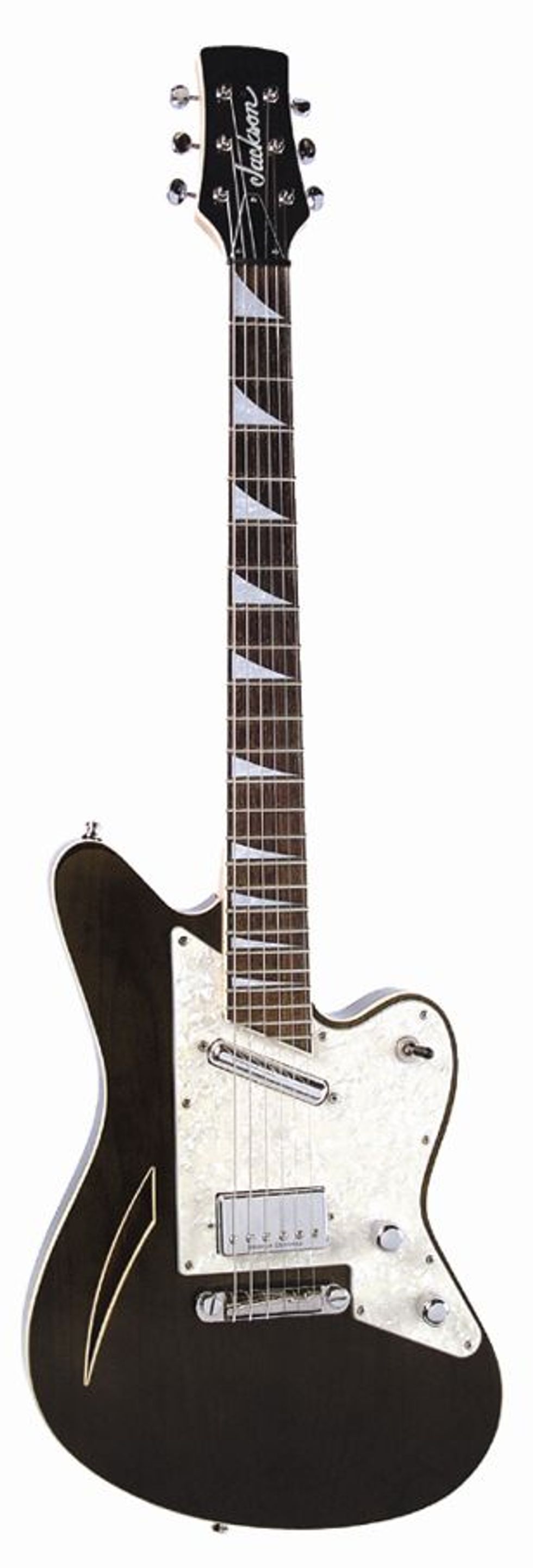 |
company. By the late-eighties, IMC further differentiated both brands, moving all of the higher-end models to the Jackson side and leaving Charvel with mainly entry-level and medium grade guitars. IMC also began producing Charvel models in Japan and Korea, which marked a turning point for Charvel, as the bulk of the instruments were no longer built in the U.S. Throughout the nineties, Jackson continued to flourish while Charvel slowly floundered to the point where they ceased production in the mid-nineties.
In the fall of 2002, Fender Musical Instruments Corporation (FMIC) bought Charvel and Jackson. With the purchase, they revived the Charvel trademark. This is why Charvel and Jackson are so closely associated with each other today. In fact, instead of printing individual Charvel and Jackson factory catalogs, IMC often printed one large catalog featuring both trademarks’ entire line of instruments. Also, unlike the arrangement in the early nineties, Charvel is now mainly a custom shop based in San Dimas while Jackson produces a wide variety of electric guitars ranging from entry-level to signature U.S. models. Charvel and Jackson continue to be a mainstay in Fender’s empire of guitars.
Charvel/Jackson guitars are usually associated with the hair metal era; the guitars’ pointy bodies, hockey stick-shaped headstocks and sharkfin inlays provided a perfect accompanyment to the faster, flashier form of rock that was popular in the eighties. In the early nineties, Charvel developed something totally unlike their flagship series
with the Surfcaster, and it was greeted with great success. This was in part due to the acceptance by Robert Plant of Led Zeppelin fame, who ordered several of them for his band at the time. However, Charvel was in a downward spiral at the time and by the mid-nineties they had discontinued production. Instead of killing off the Surfcaster, they moved it over to the Jackson line where it was produced until 2005. According to Jackson’s 1999 catalog, the Surfcaster “represents the best of the vintage instruments combined with the reliability and playability of the modern guitar.” The Surfcaster features a semi-hollow body with a unique soundhole and a combination of pickups that included a lipstick.
Your guitar is a Surfcaster SC1 and was the first Jackson Surfcaster to be released. It features a mahogany body with an ash top, bolton maple neck, 24-fret rosewood fingerboard with sharkfin inlays, “traditional” style headstock with three-per-side tuners, a combination bridge/tailpiece, Duncan designed pickups with a humbucker in the bridge position and a single-coil “lipstick” in the neck, two knobs (Volume and Tone) and a 3-way pickup switch. Jackson describes the finish on your guitar as Transparent Black.
Surprisingly enough, the Surfcaster is one of the few guitars from the nineties that has actually seen an increase in value over its original selling price (most values are still below the original retail price, but none of these guitars were sold at full retail because of standard discounting). The Jackson SC1 is worth between $700 and $800 today and the Charvel Surfcasters are bringing even more money. If you’re a Jackson/Charvel fan, and you’re looking to merge both vintage and modern worlds, the Surfcaster is a solid treasure to have!
Zachary R. Fjestad
Zachary R. Fjestad is the author of the Blue Book of Acoustic Guitars, Blue Book of Electric Guitars, and the Blue Book of Guitar Amplifiers.
Questions can be submitted to:
Blue Book Publications
Attn: Guitar Trash or Treasure
8009 34th Ave. S. Ste #175
Minneapolis, MN 55425
800-877-4867
www.bluebookinc.com
guitars@bluebookinc.com
Please include pictures of your guitars.



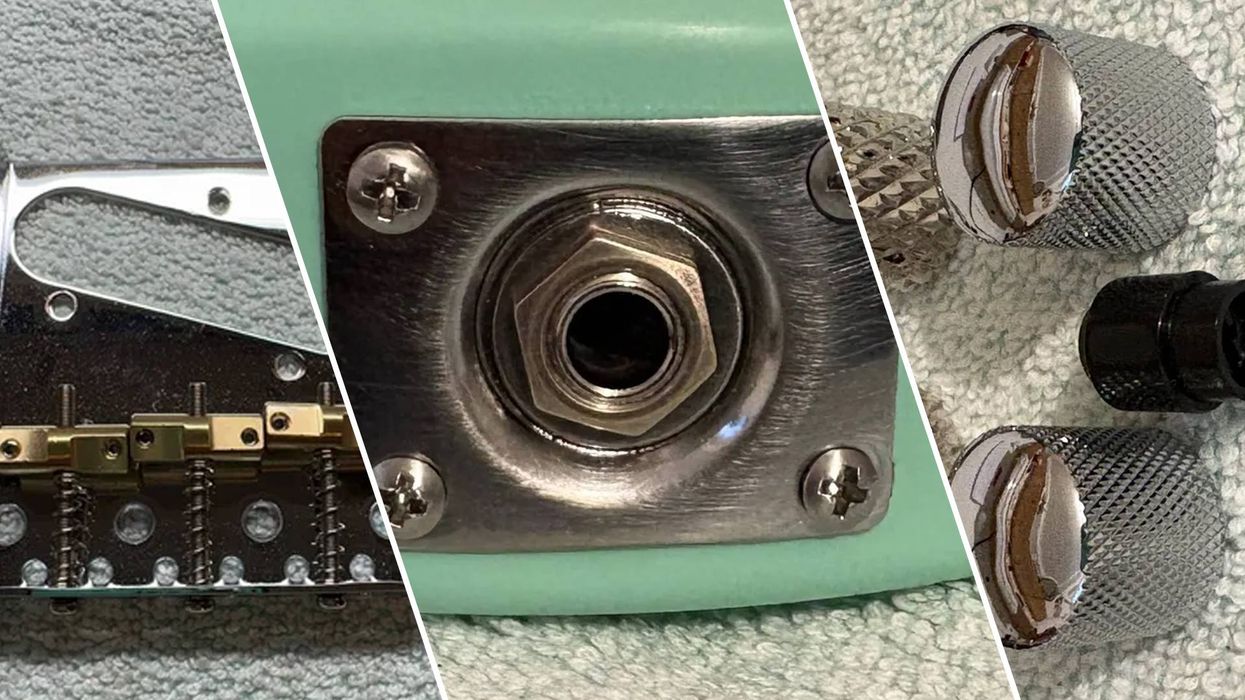



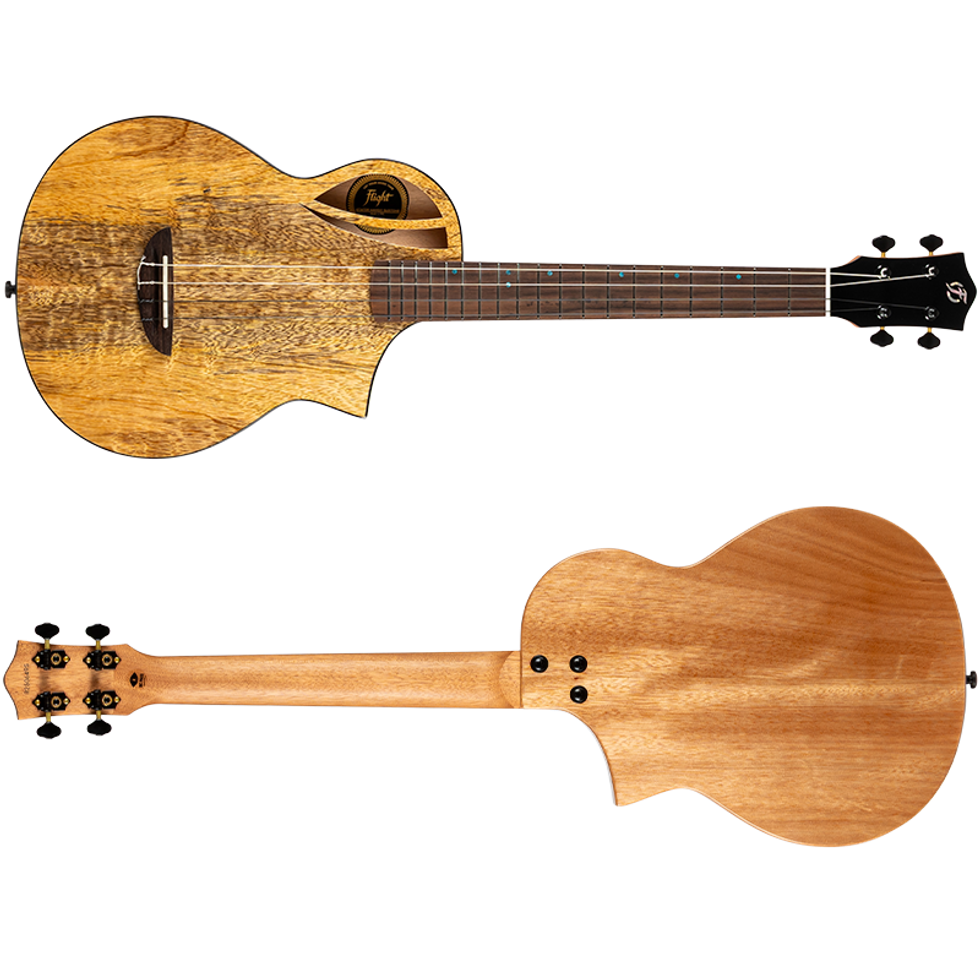
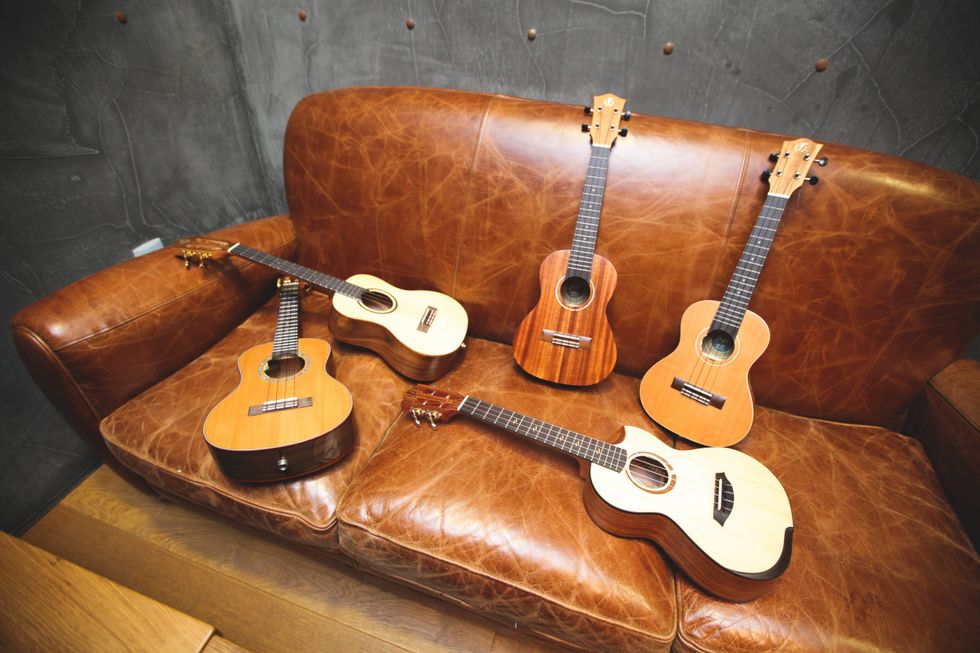




![Rig Rundown: Russian Circles’ Mike Sullivan [2025]](https://www.premierguitar.com/media-library/youtube.jpg?id=62303631&width=1245&height=700&quality=70&coordinates=0%2C0%2C0%2C0)





